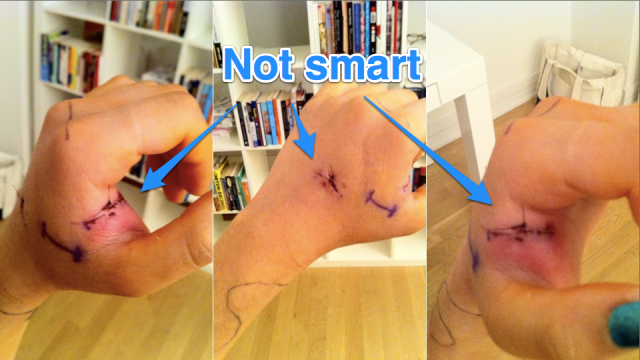As we all learned this month, infections are cray. By the time my cat bite infection was seen by an infectious diseases specialist it was past the point of antibiotic responsiveness. We tried two, neither worked. So they operated, drained the infection, sewed me up. My cat hand is so much better now, but I wonder how my emergency medical experience might have been different had it happened only slightly in the future.
A team of researchers at the University of Illinois at Urbana-Champaign have successfully developed an electronic suture that contains ultrathin silicon sensors integrated on polymer or silk strips and can be laced through the skin and knotted just like conventional medical stitches.
These smart sutures are able to precisely measure body temperature at the site if the wound — infection elevates the skin’s temperature — as well as to deliver heat to the wound site, which is known to aid in healing.
With the help of his colleagues, John Rogers, a professor of materials science and engineering at the university, developed the suture using silicon membranes, gold electrodes, and wires that are just a few hundred nanometers thick and patterned in a serpentine shape. MC10, a Cambridge, Massachusetts–based startup Rogers cofounded, is commercializing the technology — which is still only in its trial phase.
The researchers first use chemicals to slice off an ultrathin film of silicon from a silicon wafer. With a rubber stamp, they lift off and transfer the nanomembranes to polymer or silk strips. Then they deposit metal electrodes and wires on top and encapsulate the entire device in an epoxy coating.
They have built two types of temperature sensors on the sutures. One is a silicon diode that shifts its current output with temperature; the other, a platinum nanomembrane resistor, changes its resistance with temperature. The micro-heaters, meanwhile, are simply gold filaments that heat up when current passes through them.
All materials are said to be safe for use in the body; the sutures have been tested out by the researches on rat skin. The next step, they say, is to take this technology wireless. Of course. [TechnologyReview, Small]
